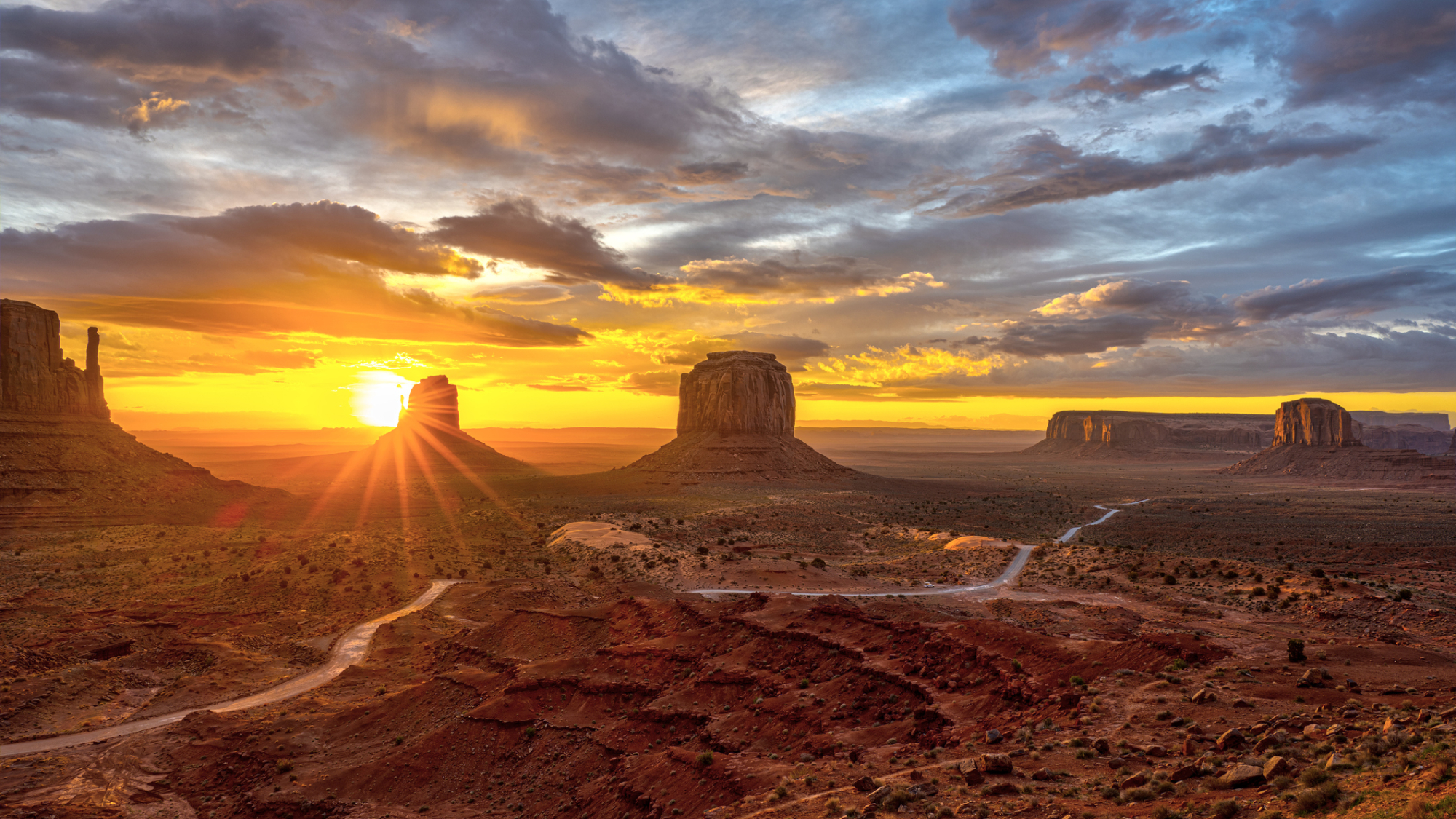These Navajo Tribal Parks will be closed during the Oct. 14 annular solar eclipse
All Navajo Tribal Parks will be closed for the upcoming solar eclipse.

A solar eclipse will be visible across most of the Americas, including eight U.S. states from Oregon to Texas, in October, but you won't be able to see it from a few key places after all.
While millions of people will be flocking to the path of annularity — the narrow strip from which the 'ring of fire' solar eclipse can be seen — there are some locations along this path that will be closed to the public during the annular solar eclipse on Oct. 14.
This month, it was announced that all Navajo Tribal Parks would close from 8 a.m. to 1 p.m. MDT on October 14, 2023, due to Navajo cultural beliefs surrounding the event. This includes Monument Valley Navajo Tribal Park, Four Corners Monument Navajo Tribal Park and parts of the Tséyi’ Diné Heritage Area in Canyon de Chelly National Monument. Local businesses may also be closed.
Related: How long will the annular solar eclipse last on Oct. 14?
A solar eclipse occurs when the moon is positioned between Earth and the sun, casting a shadow over Earth. Due to the moon's slightly elliptical orbit around Earth, at two points each month it is farthest (apogee) and closest (perigee) to Earth, making it appear slightly smaller and slightly larger than average in our sky. During an annular solar eclipse the moon will look relatively small and only over about 91% of the sun's disk, leaving a thin outer ring often called a "ring of fire."
In Navajo culture, an eclipse is a new beginning. The Navajo word for a solar eclipse jóhonaa'éí daaztsą́ means "the death of the sun" according to Navajo Traditional Teachings. During a solar eclipse, many Navajo people will remain inside, fasting and praying. When the sun returns, it's considered a new birth and a recognized time to make resolutions. You can read more about the Navajo knowledge of the cosmos with these insightful resources from the Exploratorium.
If you're planning on making a trip to see the annular solar eclipse please check ahead of time for local closures and restrictions and follow the Visit With Respect guidelines.
Get the Space.com Newsletter
Breaking space news, the latest updates on rocket launches, skywatching events and more!
Our top tips for planning your trip to the annular solar eclipse guide will help you make sure you chose the right location and are properly equipped. Or if you're unable to catch the eclipse first-hand, there's no need to worry as there are plenty of solar eclipse livestreams with expert commentary. Our how to watch the annular solar eclipse in person and online guide has rounded up some of the best free livestreams available all in one place.
REMEMBER to NEVER look at the sun directly. To safely view this solar eclipse you must use solar filters at all times. Whether your location will experience a partial solar eclipse or an annular solar eclipse, the dangers are the same. Observers will need to wear solar eclipse glasses, and cameras, telescopes and binoculars must have solar filters placed in front of their lenses at all times.
Our how to observe the sun safely guide tells you everything you need to know about safe solar observations.
Join our Space Forums to keep talking space on the latest missions, night sky and more! And if you have a news tip, correction or comment, let us know at: community@space.com.

Daisy Dobrijevic joined Space.com in February 2022 having previously worked for our sister publication All About Space magazine as a staff writer. Before joining us, Daisy completed an editorial internship with the BBC Sky at Night Magazine and worked at the National Space Centre in Leicester, U.K., where she enjoyed communicating space science to the public. In 2021, Daisy completed a PhD in plant physiology and also holds a Master's in Environmental Science, she is currently based in Nottingham, U.K. Daisy is passionate about all things space, with a penchant for solar activity and space weather. She has a strong interest in astrotourism and loves nothing more than a good northern lights chase!









